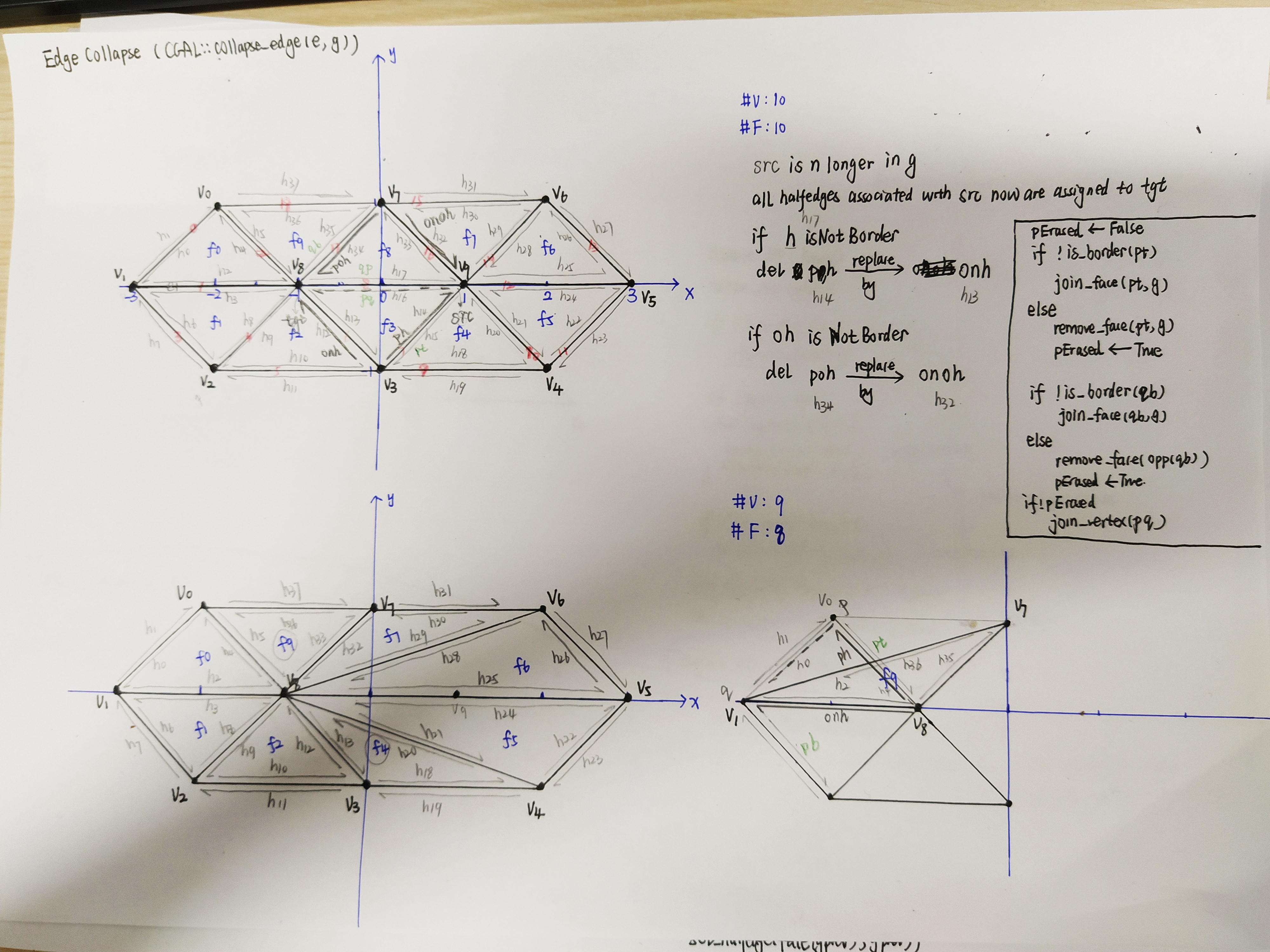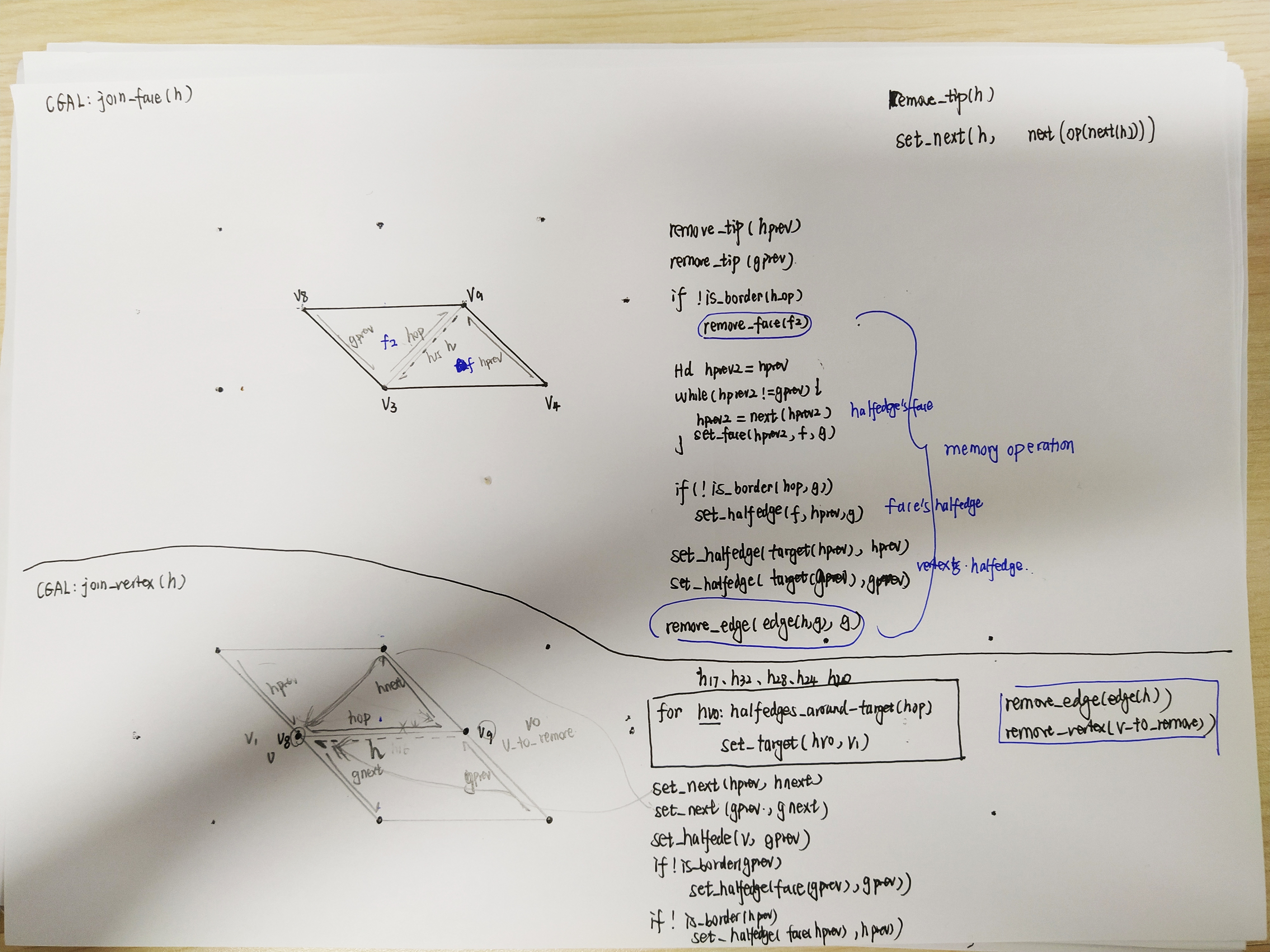This repo contains my own adaptions for 3 geometry processing libraries:
- ACAM https://github.com/USTC-GCL-F/AMMesh
- CGAL-5.3
- Libigl
https://www.bilibili.com/video/BV1B54y1B7Uc
- Libigl
- Basic type such as vec, matrix must follow Eigen's API
- for template class, implementation is in the header file
- for short member function, implementation is in the header file
- const global varaible: const INVALID_IND = ...;
- class's member variable: mClsMemVar, or, memVar_, to distiguish from local variables
How to find the light direction given an image: n.dot(light) = diffuse Can I add normal info when doing laplace inflation? Read Interactive Normal Paper
implement direct laplace smooth and implicit laplace smooth
Mean Curvature Normal: L*X = -2 * H * normal
- K > 0: elliptical local convexity, sum_OneRignIncidentAngles < 2 * PI, a elliptical point
- K = 0: hyperbolic, sum_OneRignIncidentAngles == 2 * PI, a flat plane
- K < 0: parabolic saddle points, sum_OneRignIncidentAngles > 2 * PI, a saddle point
Derive shape cost K by hand
Let the vertex flow into mean-curvature normal.
du / dt = L * u
u(t+1) - u(t) = L * u(t+1)
so, solve (I-L)* u(t+1) = u(t)
Implementation
// M: mass matrix, Lcot: cotmatrix, L: laplace matrix, L = Minv * Lcot
// (I-L) * u(t+1) = u(t)
// (I-Minv*Lcot) * u(t+1) = u(t)
// (M - Lcot) * u(t+1) = u(t)
// so solve: (M - Lcot) * u(t+1) = u(t)
ToDO: validate in code
SkelByMeshContract (contract then collapse) == Q-MAT (find the optimal collapsed position to minimize reonstruct error)
Refer hw2
Input: mesh (halfedge datastructure)
Output: vUmbrella (local average region, one-ring area)
# mixed voronoi: edge midpoint for obtuse triangle
for f in faces:
if f.isObtuse:
for v in fvs:
if v.isObtuse:
vUmbrella[v] += 0.5 * fArea
else:
vUmbrella[v] += 0.25 * fArea
else:
cent = f.circumcenter()
for v0, v1 in fedgepoints:
midp = (v0 + v1) / 2
half_len = 0.5 * (v0-v1).norm()
areaRightAngTri = (midp-cent).norm() * half_len) /2
vUmbrella[v0] += 0.5 * areaRightAngTri # !!! multiply 0.5 since each vertex is counted twice
vUmbrella[v1] += 0.5 * areaRightAngTri # !!! multiply 0.5 since each vertex is counted twice
# barycentric: barycenter, edgemidpoints
for f in faces:
for v0, v1 in fedgepoints:
vTri = f.area() / 6 # barycenter and edge midpoint split the whole triangle face into 6 equal-size triangles
vUmbrella[v0] += 0.5 * vTri # !!! multiply 0.5 since each vertex is counted twice
vUmbrella[v1] += 0.5 * vTri # !!! multiply 0.5 since each vertex is counted twice
Flow-based understanding: divergence of flow. Mean-curvature normal.
- Cotagent Laplace vs Uniform Laplace: Cotagent Laplace is linear on plane. (Lf_i)=0 for all interior vertices when positions of vertices are in the plane.
for f in faces:
for v0, v1 in fes:
L(v0, v0) -= cot(f, e01) # e01, edge between vertex 0 and vertex 1
L(v1, v1) -= cot(f, e01)
L(v0, v1) += cot(f, e01)
L(v1, v0) += cot(f, e10)
Laplace == divergence of gradient. This is a visulization of gradient field on triangle mesh

